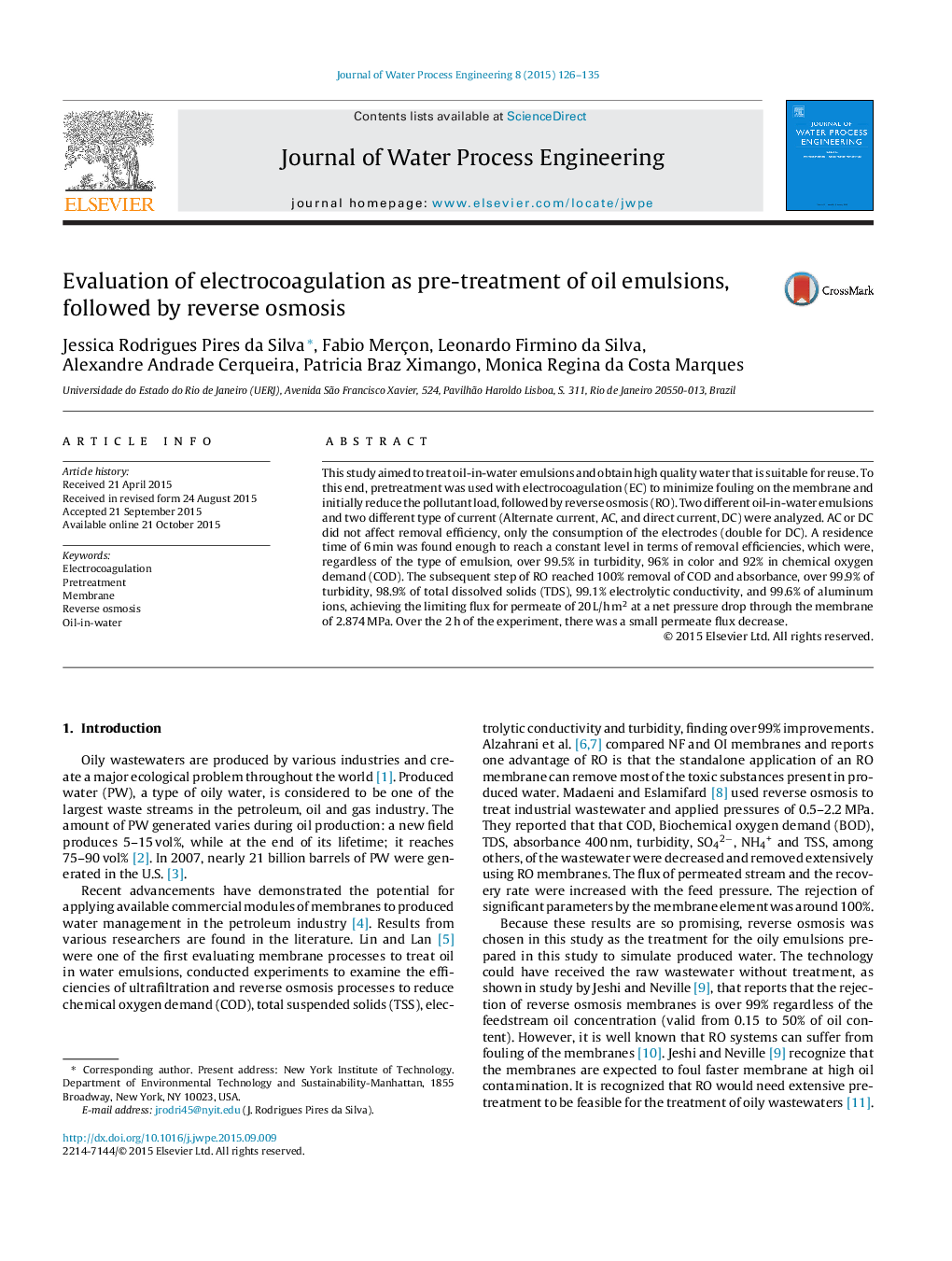| کد مقاله | کد نشریه | سال انتشار | مقاله انگلیسی | نسخه تمام متن |
|---|---|---|---|---|
| 232509 | 465290 | 2015 | 10 صفحه PDF | دانلود رایگان |
• DC current results in more electrode consumption than AC, but similar efficiency indices.
• Efficiency in electrocoagulation has a similar behavior for different oil emulsions.
• Reverse osmosis is very effective in eliminating the residual pollutant load.
• Measures taken to minimize fouling, mainly pretreatment with EC, were effective.
• Increase of applied pressure did not affect the efficiency of rejection of the membrane.
This study aimed to treat oil-in-water emulsions and obtain high quality water that is suitable for reuse. To this end, pretreatment was used with electrocoagulation (EC) to minimize fouling on the membrane and initially reduce the pollutant load, followed by reverse osmosis (RO). Two different oil-in-water emulsions and two different type of current (Alternate current, AC, and direct current, DC) were analyzed. AC or DC did not affect removal efficiency, only the consumption of the electrodes (double for DC). A residence time of 6 min was found enough to reach a constant level in terms of removal efficiencies, which were, regardless of the type of emulsion, over 99.5% in turbidity, 96% in color and 92% in chemical oxygen demand (COD). The subsequent step of RO reached 100% removal of COD and absorbance, over 99.9% of turbidity, 98.9% of total dissolved solids (TDS), 99.1% electrolytic conductivity, and 99.6% of aluminum ions, achieving the limiting flux for permeate of 20 L/h m2 at a net pressure drop through the membrane of 2.874 MPa. Over the 2 h of the experiment, there was a small permeate flux decrease.
Journal: Journal of Water Process Engineering - Volume 8, December 2015, Pages 126–135
